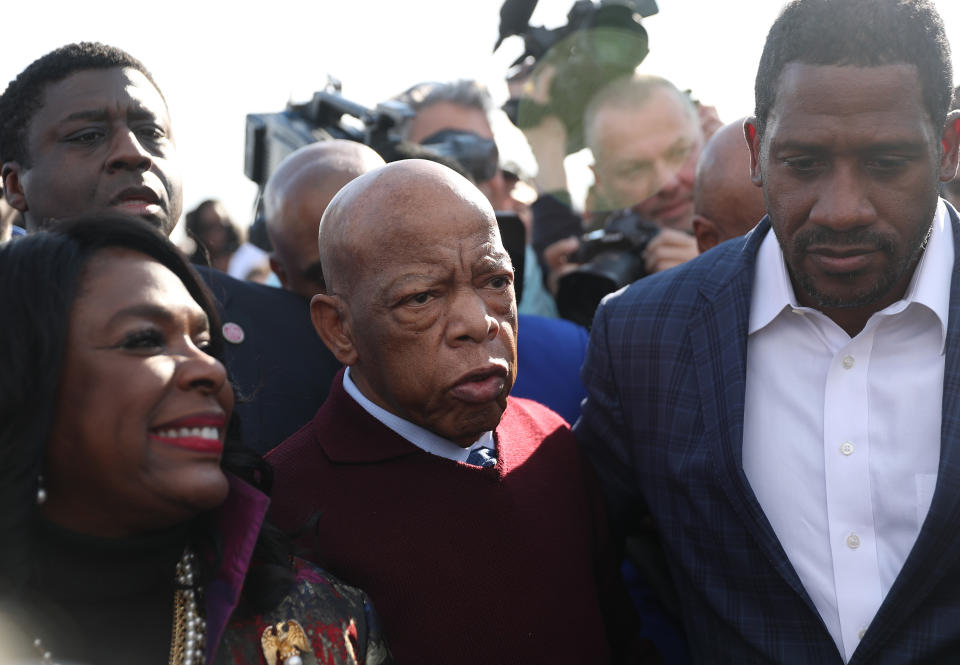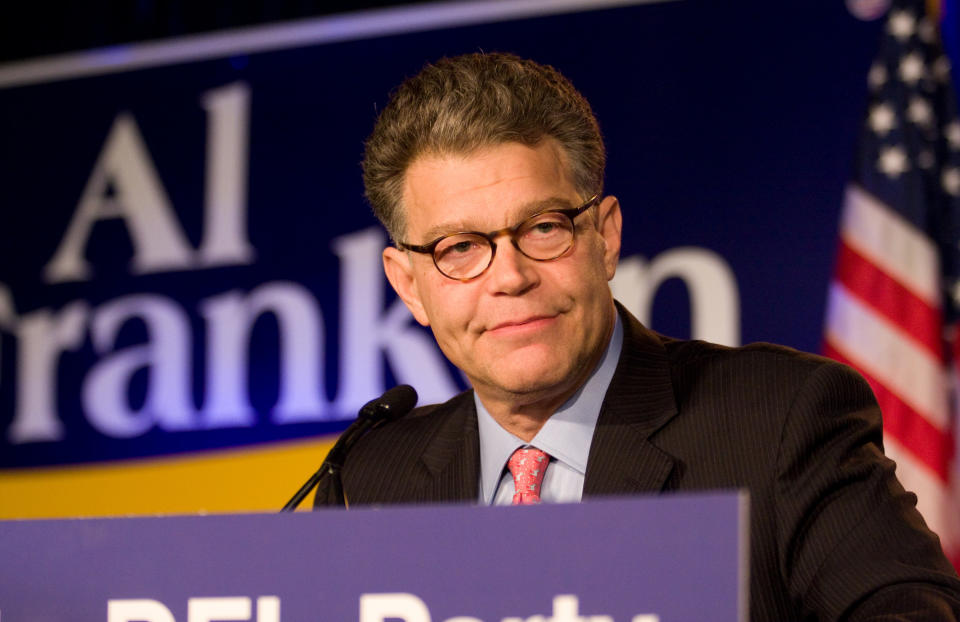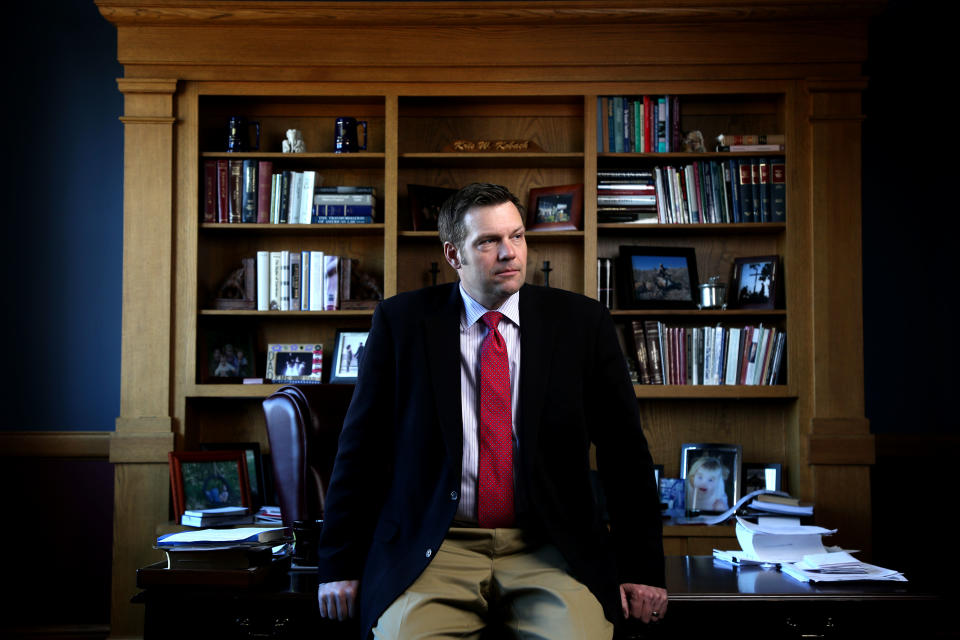What is voter fraud? Yahoo News explains
For two decades, Americans have argued about voter fraud — often in simplified terms. Republican lawmakers tend to argue that voter fraud is a major problem that undermines democracy. Democrats, meanwhile, counter that real instances of voter fraud are vanishingly rare, and that Republican remedies such as voter ID laws are just thinly veiled attempts at discouraging turnout, particularly among minorities.
Thankfully, the issue has been studied at length. And those studies have routinely shown that while it’s inaccurate to say that voter fraud doesn’t exist, it’s also wrong to say that it’s in any way common.
Analysts argue that there is a better way of approaching the issue. First, how do we balance election security with voter access? In other words, how do we increase the integrity of election results while also increasing voter participation?
Second, how much abuse is there? And perhaps most important, are the proposed solutions to current problems effective and proportional, or do they do more harm than good?

Rep. John Lewis, the civil rights pioneer who was beaten nearly to death by Alabama state police in 1965, once described voter ID laws as “a cure where there is no sickness.”
Lewis was not saying that voter fraud does not exist. He was saying that voter ID laws to combat voter fraud are too costly and onerous a way to eliminate something that happens infrequently: voter impersonation.
Voter impersonation is one of a few main ways that opportunities for voter fraud exist. Another is if people are registered in multiple states and vote multiple times. A third is when those who are not allowed to vote under the law do so anyway, such as a noncitizen or — in some states — convicted felons. But even here, intent matters. Fraud occurs only when someone knowingly breaks the rules.
One study found 31 credible examples, over 14 years, of voters impersonating someone else. Another study between 2000 and 2012 found 10 cases of voter impersonation.
Even a database of fraud cases compiled by the conservative Heritage Foundation found only 80 cases of double voting over the course of the past several decades. The Heritage database, in fact, might be one of the best resources to demonstrate the rarity of voter fraud and election fraud.
Conservatives often cite the Heritage data set as showing 1,100 incidents of fraud. But a 2017 analysis of the database argued that the conservative group’s documentation of the issue actually “undermines its claim of widespread voter fraud.”
“The database includes an assortment of cases, many unrelated or tangentially related, going back decades, with only a handful pertaining to noncitizens voting or impersonation at the polls. They add up to a molecular fraction of the total votes cast nationwide,” wrote Rudy Mehrbani of the Brennan Center for Justice at New York University, a leading group advocating for greater voting rights.
One of the more prominent claims of voter fraud in recent decades involved the 2008 U.S. Senate election in Minnesota, which Democrat Al Franken won by just over 300 votes. More than 100 people with felony records were later convicted of voting in the election.

Republicans said Franken might have won with the help of unlawful voting. But local prosecutors dismissed that idea, along with conservative suspicions that perhaps more than 1,000 people illegally cast ballots. The state made reforms to prevent the problem in the future.
There is also a 2012 Pew study, which found 1.8 million dead people still listed as voters, and 2.75 million names listed as voters in more than one state. But the study did not find any fraud, and there is almost no evidence of voters trying to impersonate dead people outside of some historical instances of election fraud.
Election fraud is different from voter fraud. This is when insiders — politicians, operatives they hire or elections officials — try to break the rules or cheat. It usually poses more of a threat to some small, local elections, although there are some examples of it famously happening on a wider scale.
Republican lawmakers, however, have focused much more on voter fraud over the past two decades.
George W. Bush’s attorney general, John Ashcroft, turned the focus of the Justice Department away from preventing voter suppression under the 1965 Civil Rights Act and made preventing voter fraud and election fraud a top agenda item. Since then, the threat of voter fraud has been used to make it harder to vote in many states. Voter ID laws are now in force in 34 states.
Most experts say that voter ID requirements have likely done more to prevent Americans from voting than they have to stop fraud. Poor Americans are most likely to lack a driver’s license or other forms of valid ID, and often do not have access to documents needed to obtain valid ID, such as a birth certificate. In some states as well, DMVs have strictly limited the times when they are open or register voters.
Rick Hasen, a law professor at the University of California, Irvine, and one of the top experts on the issue of voting, has called the top proponents of the voter fraud threat “hucksters” who are “providing fake scholarly support” for the notion of a widespread problem.
In 2008, disputes over the prevalence of voter fraud made their way to court. The American Civil Liberties Union sued Kris Kobach, then the secretary of state in Kansas, over a law he had helped get passed that required a birth certificate or passport to vote.

It’s Kobach, in fact, who may have helped persuade President Trump to make wild claims that millions of undocumented immigrants voted in 2016 and enabled Hillary Clinton to win 3 million more votes than he did. Kobach is running this year for the U.S. Senate.
But when the ACLU sued Kobach and he was forced to present evidence in a court of law, he could only offer proof of less than 40 noncitizens attempting to vote over a 20-year period in one of the state’s biggest counties. Most of those were the result of confusion or error, and only five of those 40 actually voted.
Judge Julie Robinson, a Bush appointee, held Kobach in contempt of court and overturned the law, finding that it had disenfranchised “tens of thousands of voters.”
“The law,” Robinson wrote in her opinion, “was a bigger problem than the one it set out to solve.”
Cover thumbnail photo: Luke Sharrett/Bloomberg via Getty Images
_____
Read more from Yahoo News:



